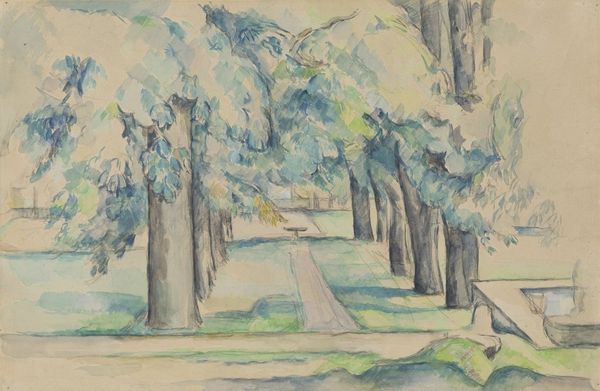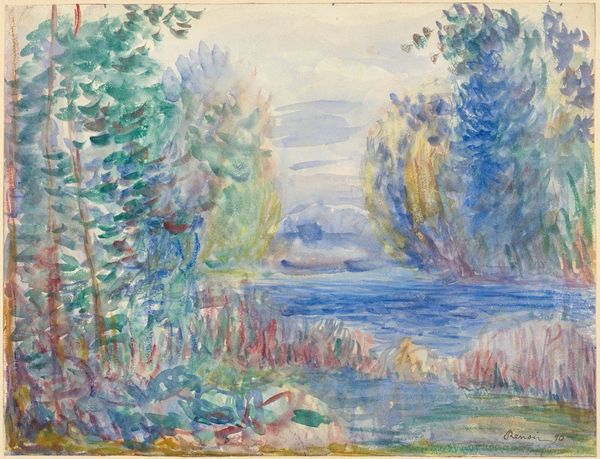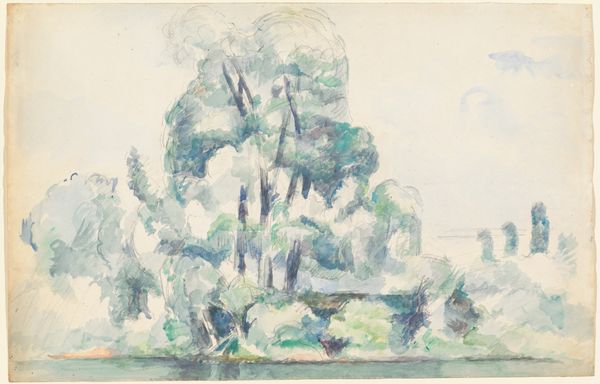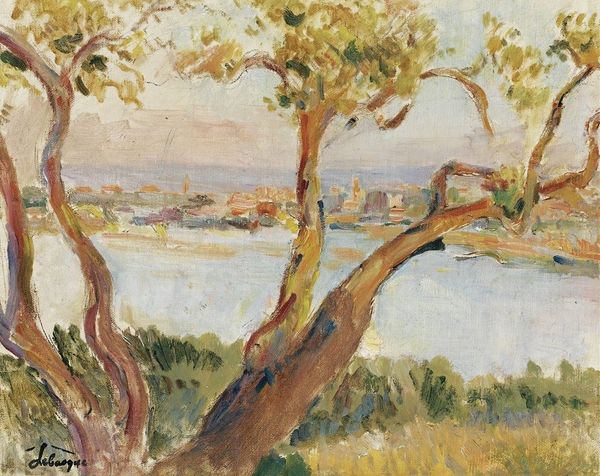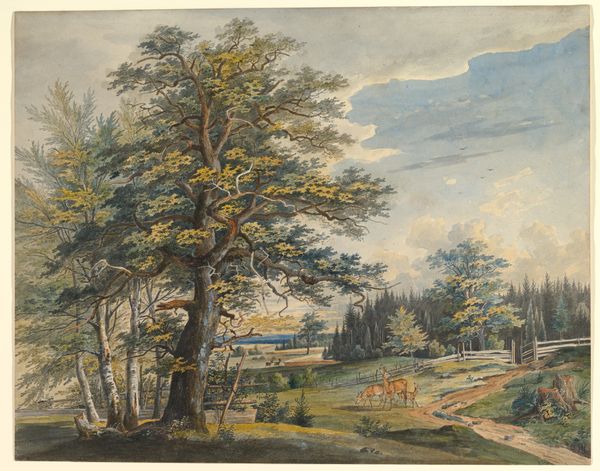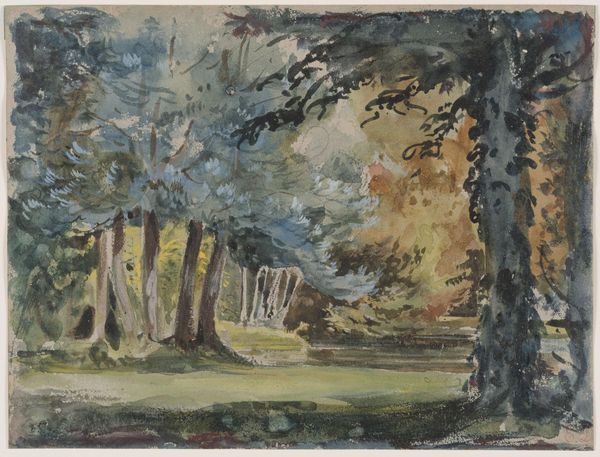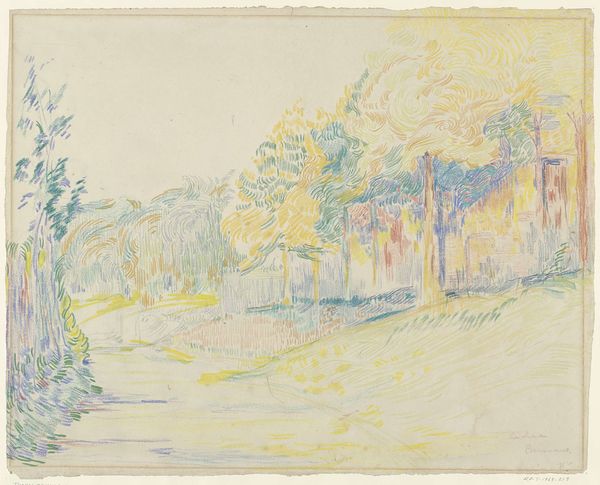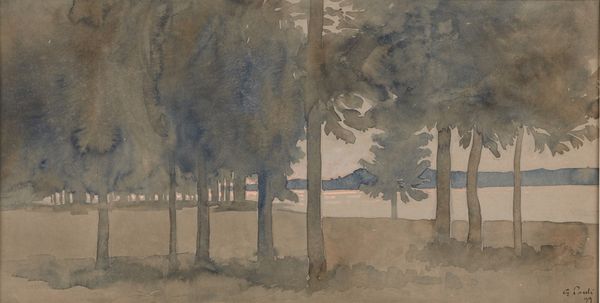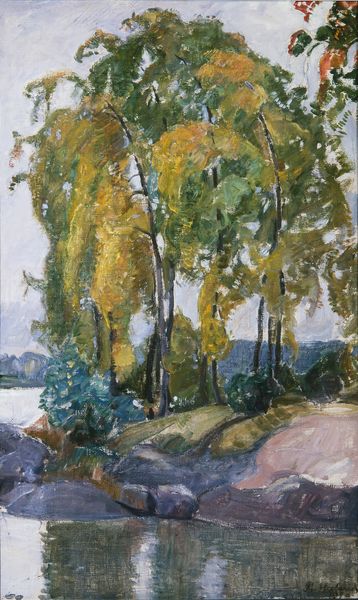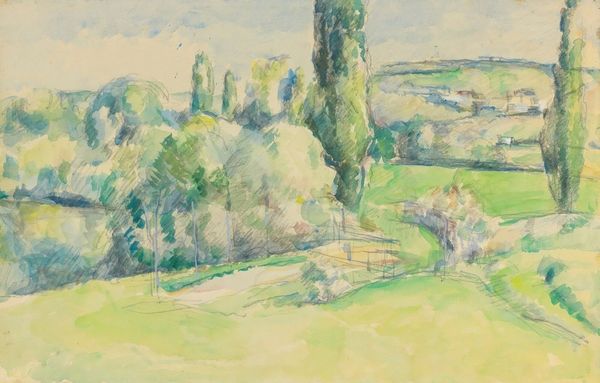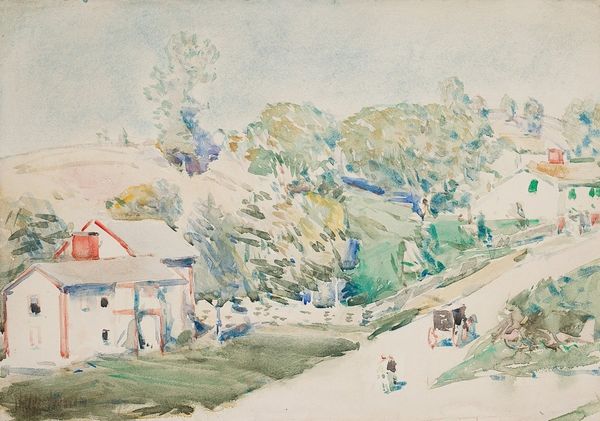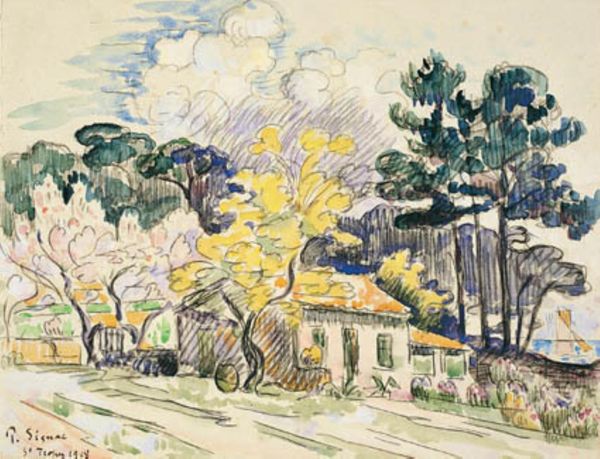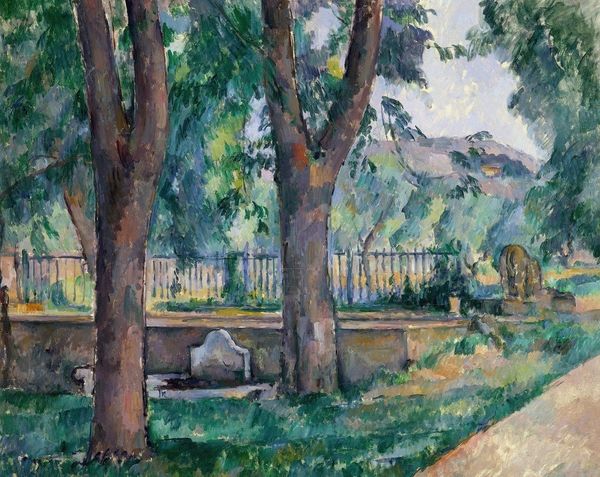
Copyright: Public Domain: Artvee
Editor: Here we have Childe Hassam’s "Newburgh, New York," painted in 1914, apparently using oil paint or possibly watercolor. It evokes a sense of tranquility for me, almost like a faded memory. What formal elements strike you most prominently in this piece? Curator: Initially, the high-key palette establishes a structural harmony, but it is the subtle variations in value that articulate spatial recession. Note how the verdant tones in the foreground yield to muted blues and greys as the eye travels into the distance. The surface appears unified at first glance, but closer inspection reveals subtle tensions—brushstrokes working to create the illusion of depth through carefully orchestrated planes. Editor: The way you describe it, the spatial recession is not so much presented but almost... enacted by the painting itself. How does Hassam negotiate line and form here? Curator: The interplay of line and form is crucial. Observe how the skeletal structures of the trees are defined with sharp, angular strokes, creating a rhythmic counterpoint to the soft, amorphous shapes that suggest foliage and landscape. The forms do not explicitly define, yet they communicate enough visual data to form the overall visual impression. Editor: So, the structural components are not just aesthetic choices but integral to understanding the whole painting's architecture, its fundamental essence. That makes a lot of sense! Curator: Precisely. And appreciating that architecture provides a solid ground from which one may approach a greater variety of works with deepened insight. Editor: It seems I was looking at this painting the wrong way entirely, more focused on 'feeling' than 'structure'. Thank you.
Comments
No comments
Be the first to comment and join the conversation on the ultimate creative platform.

